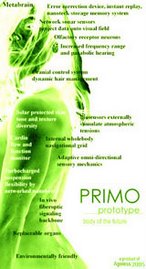Recently I came across a rather interesting website: Learn.Genetics- Genetic Science Learning Centre. The website is hosted by the University of Utah, and is meant to “[help] people understand how genetics affects their lives and society” (the website’s mission statement).
Learn.Genetics covers an array of issues pertaining to genetic engineering, ranging from stem implantation to cloning. What I enjoy most about this website is that it doesn't just launch you into uncharted area- it eases you into it with interactive step-by-step infographics.
If you are not familiar with the configurations of a cell or DNA molecule, then you should probably start off with the 'Tour of the Basics’. Among other options, you can choice to explore what are genes, chromosomes and DNA molecules.
My favourite interactive infographic is ‘Click and Clone’, whereby as a user, you get to clone a mouse called Mimi. You ‘literally’ (well, maybe 'virtually' is the better term) conduct the scientific procedure yourself. You have to ‘click and drag’ the nucleus and cells using the instruments provided. The audio accompanying each interaction brings some degree of life and immediacy into the animation.
Step-By-Step
Before you embark on the experiment, you are introduced to the mice and tools you will be using to clone Mimi. There is:
- Mimi: the brown mouse you will be cloning
- Megdo: the black mouse, which will be the egg cell donor
And finally
-Momi: the white mouse, which will be the surrogate mother in which the Mimi clone is grown.
Your instruments are a:
- Microscope
- Petri dish
-Sharp pipette
- Blunt pipette
And
- Chemical to stimulate cell division.
Afterwards you have to click on ‘Let’s Clone Mimi’ to proceed to the initial step. At this stage you get to examine each step in the procedure, as follows:
-Isolate donor cells from Mimi and Megdo.
-Remove and discard the nucleus from the egg cell.
-Transfer the somatic cell nucleus into the enucleated egg cell.
-Stimulate cell division.
-Implant the embryo into Momi, the surrogate mother.
-Deliver the baby mouse clone of Mimi.
I do not want to spoil the experience for you so I will not go through the steps. However, I do encourage you to do so yourself. Just a word of warning- read the instructions on each step before you start clicking and dragging.

History
This interactive infographic is based on a research protocol that was used in one of several milestone experiments on cloning. The last slide reads as follows:
The scientists learned that allowing between one and six hours for the newly transferred nucleus to adjust to adjust to the enucleated egg cell was crucial before activating the cell to successfully develop into an embryo.
If you are still unclear with the procedure and terms described above, just go through ‘Click and Clone’.



